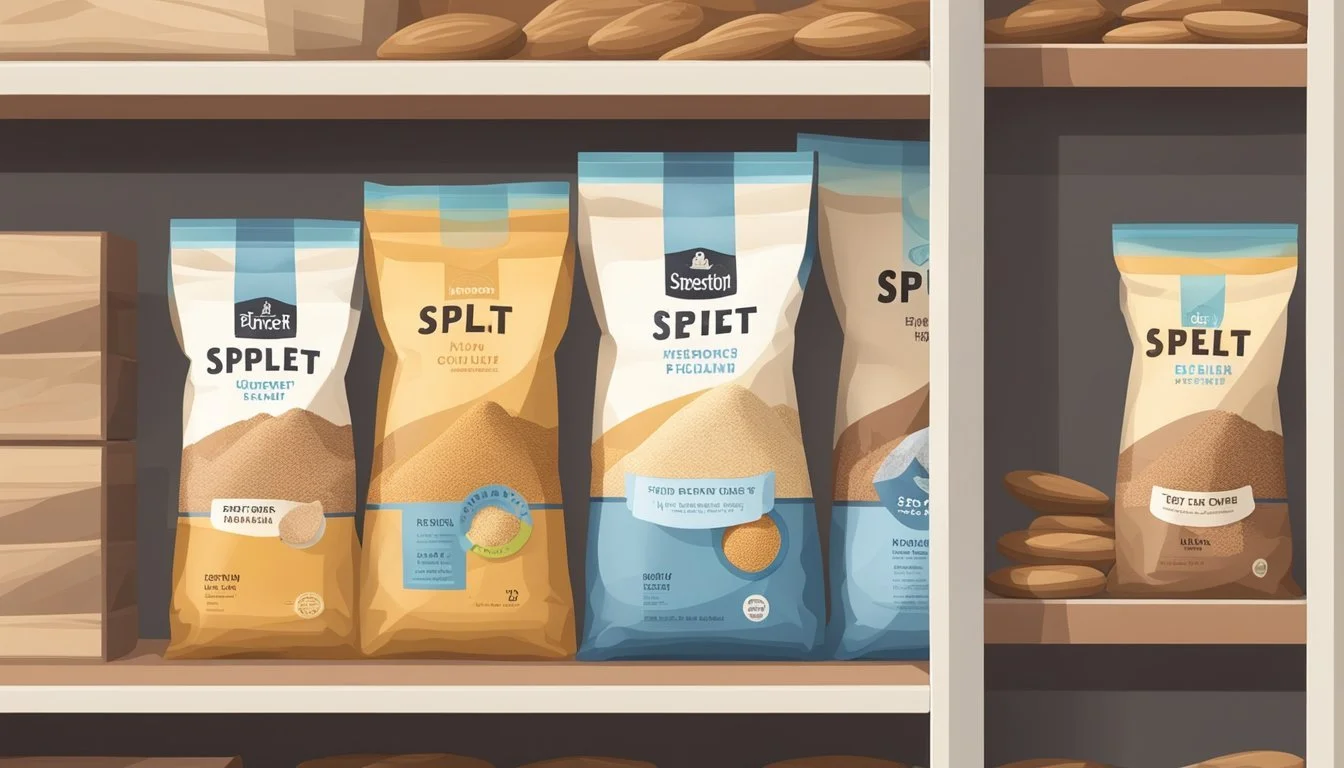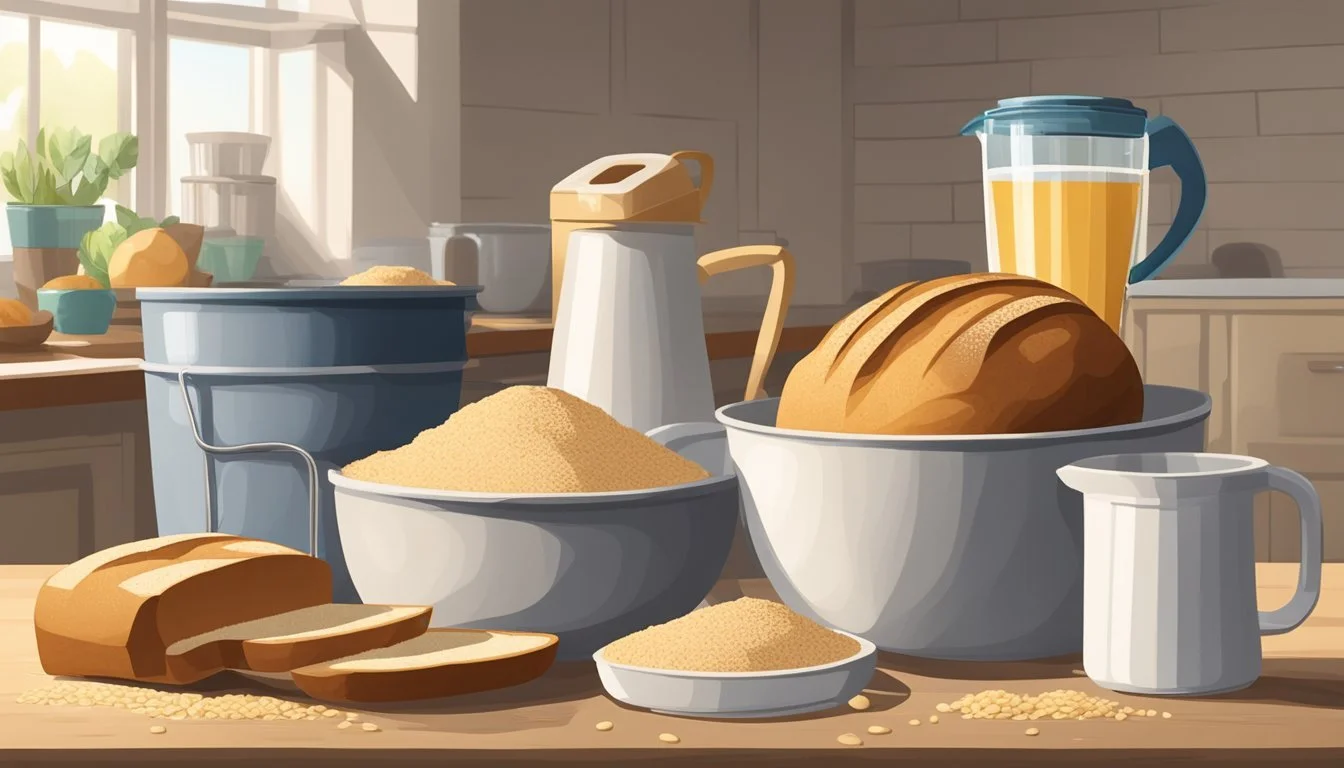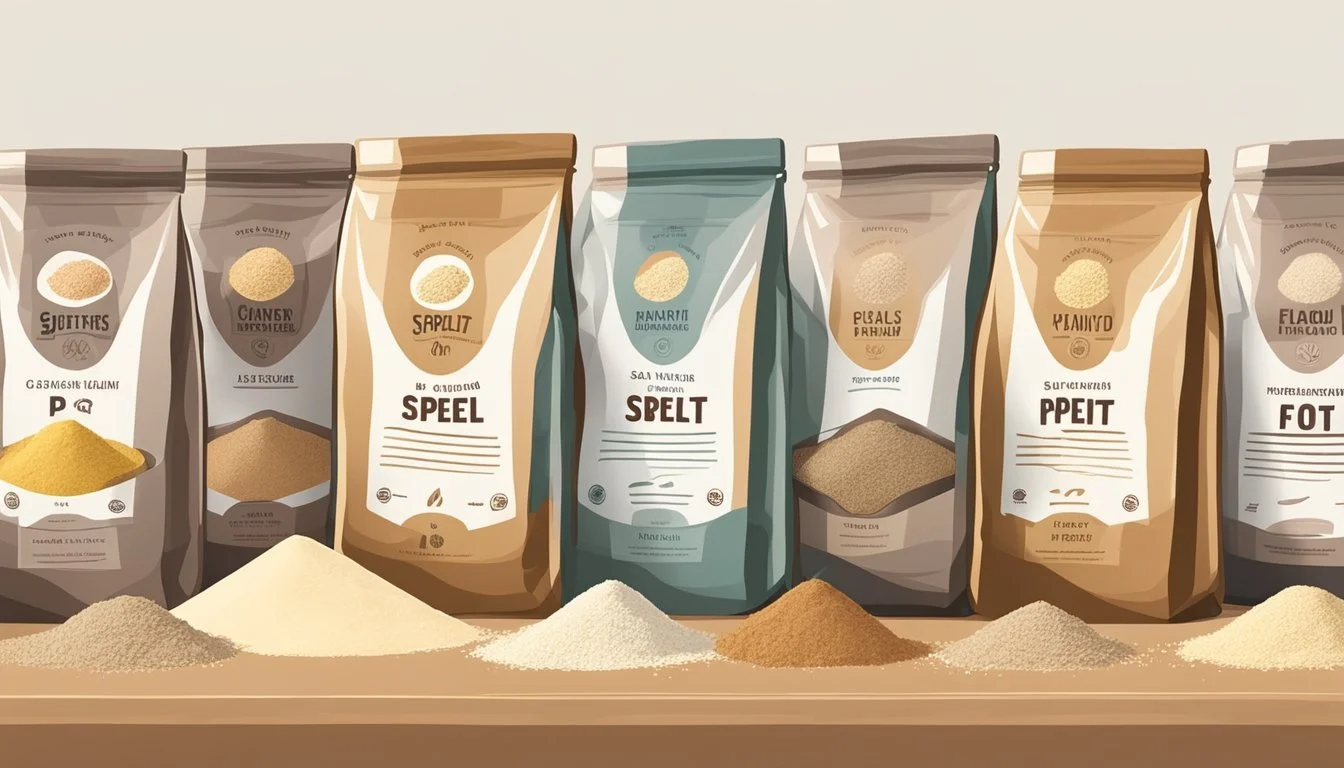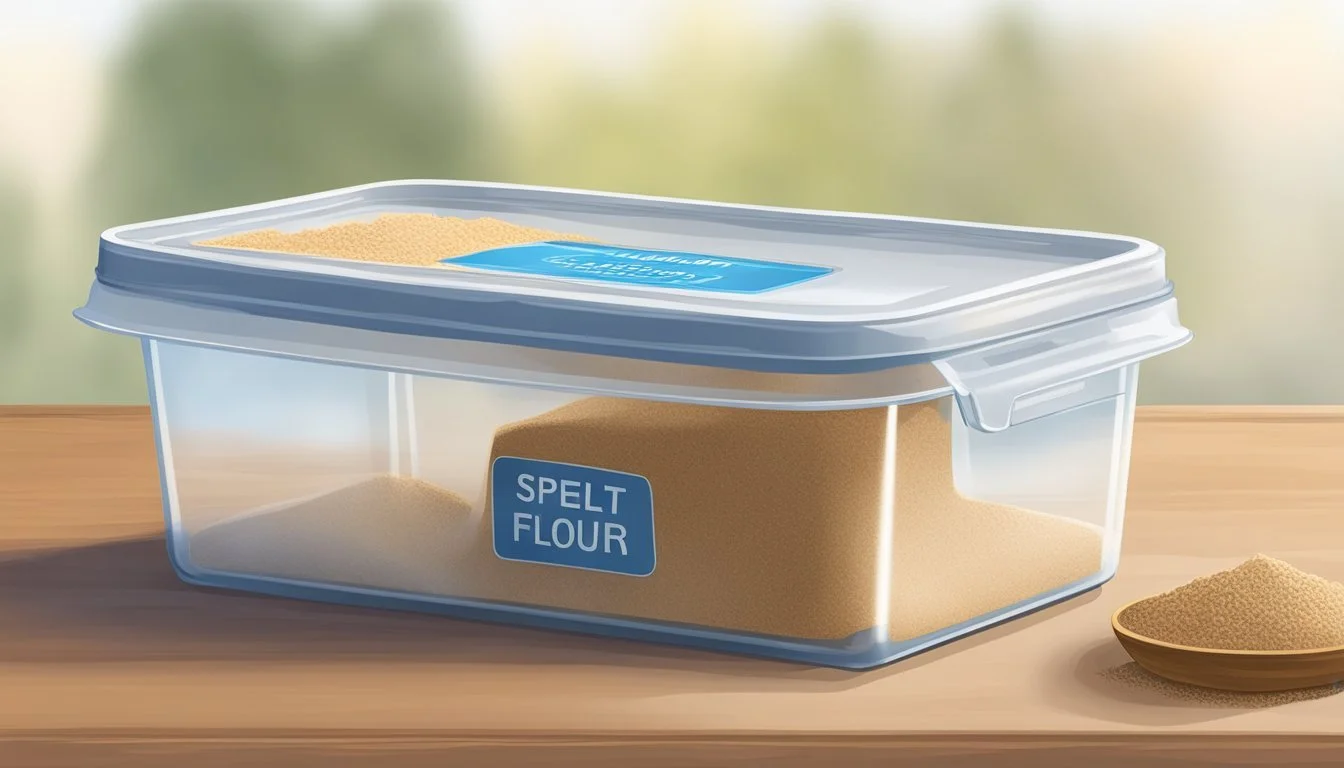Does Spelt Flour Go Bad?
Understanding Shelf Life and Storage Tips
Spelt flour, like most flours derived from grains, can indeed go bad over time. As a whole grain flour, spelt contains natural oils that are prone to oxidation, which can lead to rancidity. The shelf life of spelt flour is influenced by how it's processed and stored. While refined flours may last longer due to the removal of the bran and germ where most oils reside, whole spelt flour has a shorter lifespan because these components are left intact, fostering a more nutritious yet perishable product.
Detecting spoilage in spelt flour generally involves engaging the senses. A fresh batch of spelt flour should have a mild, nutty scent. When it starts to emit a sour or unpleasant odor, it's a strong indicator that the flour is past its prime. Similarly, spelt flour's texture should be consistent and powdery. The presence of clumps, discoloration, or signs of moisture can all signify that the flour has been compromised.
Proper storage is paramount in preserving the quality of spelt flour. It is typically recommended to store it in airtight containers away from heat and light, which can accelerate spoilage. In some cases, refrigeration or freezing can greatly extend its shelf life by slowing down the degradation process. Consumers can use the best-by date as a guideline for optimal quality, but should also trust their senses to ascertain freshness.
Understanding Spelt Flour
Spelt is classified as an ancient grain, cultivated for centuries and revered for its nutty flavor and hearty texture. Unlike modern wheat, spelt has not been extensively modified by agriculture, hence maintaining more of its natural state and nutritional properties.
Nutritional Value: Spelt flour is a treasure trove of nutrients particularly fiber, which is essential for good digestive health. It is considered a whole grain, meaning that it retains all parts of the grain kernel including the germ, endosperm, and bran, which contributes to its higher nutritional value compared to refined grains.
Nutrients:
Fiber: Supports digestion and cardiovascular health.
Proteins: Contributes to muscle repair and growth.
Vitamins: Spelt flour contains B vitamins which aid metabolism and energy production.
Minerals: A source of iron, magnesium, and phosphorus, which are crucial for various bodily functions.
As a whole grain, spelt provides these nutrients in a balanced form, making it a worthy addition to a health-conscious diet. The grain's enduring popularity is not only due to its robust profile but also its versatility in baking and cooking.
Shelf Life:
Whole-Wheat Spelt Flour: 3-6 months
Refined Spelt Flour: 6-12 months
For maximum shelf life, it is recommended to store spelt flour in a cool, dry place. Since spelt flour contains natural oils that can oxidize, proper storage is necessary to prevent spoilage. Users can identify the flour's quality by its smell; a fresh spelt flour will have a pleasing, slightly nutty aroma, while a rancid smell indicates spoilage.
Shelf Life and Expiration
When considering spelt flour, its shelf life, and expiration, one must assess both the labeled expiration date and the factors that contribute to its freshness over time.
Determining Shelf Life
The shelf life of spelt flour can be influenced by several specific factors:
Milling Type:
Whole-wheat spelt flour, which includes the entire grain, tends to have a shelf life of 3-6 months.
Refined spelt flour often lasts 6-12 months because it lacks the germ and bran which contain oils that can go rancid.
Storage Conditions:
Temperature: For optimal freshness, store spelt flour in a cool, dry place at temperatures below 70°F.
Moisture: Any signs of moisture can spoil the flour faster.
Expiration Date Significance
The expiration date on a spelt flour package serves as a guideline provided by the manufacturer that indicates the following:
Freshness: It is a suggested time frame where the flour is likely to retain its best quality.
Quality: Post expiration, there might be changes in taste, aroma, and nutritional value, but not necessarily safety.
Manufacturers are responsible for placing an expiration date or sell-by date on the label, which should be taken seriously, but it is also important to use one's judgment by examining the flour for signs of spoilage such as an off odor or changes in texture.
Factors Affecting Spelt Flour Quality
When storing spelt flour, certain environmental factors can significantly affect its quality and shelf life. Proper awareness of these conditions can help maintain the flour's integrity for a safe and nutritious cooking or baking experience.
Impact of Heat and Light
Spelt flour is sensitive to heat and light, which can accelerate its degradation. Exposure to temperatures above 70°F can lead to a reduction in its expected shelf life, while direct sunlight can further exacerbate the heat's effects.
Heat: Temperatures higher than 70°F can promote spoilage.
Light: Direct sunlight can degrade flour, affecting its flavor and color.
Moisture and Mold Growth
Flour needs a dry environment to stay fresh and prevent spoilage. Moisture provides the perfect conditions for mold growth, which not only diminishes the flour's quality but can also lead to the production of harmful compounds.
Moisture: Keep spelt flour in environments with low humidity to extend its shelf life.
Mold Growth: High moisture levels can allow mold to develop, posing health risks.
Oxidation and Rancidity
The presence of natural oils in spelt flour means that it is prone to oxidation, leading to rancidity over time. This process negatively impacts the flour's sensory characteristics, including its taste, smell, and nutritional profile.
Oxidation: Can change the flour's smell and nutritional value.
Rancidity: Affects taste, making the flour unpleasant and potentially unsafe to consume.
Identifying Spoilage
When determining whether spelt flour has gone bad, it is essential to observe changes in its smell, taste, and appearance. These factors are reliable indicators of spoilage and can help prevent the use of contaminated flour.
Changes in Smell and Taste
Smell: Fresh spelt flour typically has a slightly nutty and pleasant aroma. If the flour emits a rancid or sour odor, it may have gone bad. This change in smell is often due to the oxidation of natural oils in the grain.
Taste: Although tasting is not recommended for potentially spoiled food, a noticeable sour or off flavor in food prepared with spelt flour suggests spoilage.
Visual Indicators of Spoilage
Color and Discoloration: Normal spelt flour has a consistent color. If you observe discoloration, such as dark or dull patches, this could be a sign of spoilage.
Texture: The flour should have a fine, powdery feel. The presence of lumps or a change in texture could indicate that moisture has entered the packaging, which can lead to mold growth.
Mold: Should you find any visible mold, which could appear as spots of black, white, or green, the spelt flour is unsafe for consumption and should be discarded.
Proper Storage Techniques
Storing spelt flour correctly extends its shelf life and preserves its quality. Care should be taken to store spelt flour in conditions that shield it from heat, moisture, and pests.
Benefits of Cool, Dry Places
Importance of Temperature and Humidity: Spelt flour maintains its freshness when stored in a cool, dry place, preferably below 70°F (21°C). This type of environment prevents the onset of mold and keeps pests at bay. A pantry or a cupboard away from appliances that generate heat or areas susceptible to moisture is ideal.
Using Airtight Containers
Protection from Contaminants: Transferring spelt flour to an airtight container serves dual purposes: it minimizes exposure to air, which can quicken spoilage, and it prevents the absorption of odors and moisture, which can compromise the flour's integrity. Glass jars with tight-fitting lids or freezer bags are suitable options.
Refrigeration and Freezing Options
Extended Preservation: For long-term storage, placing spelt flour in the refrigerator or freezer can considerably extend its shelf life. In the refrigerator, spelt flour can last up to six months, while in the freezer, it can be stored up to a year. Always ensure the container is airtight and clearly labeled with the storage date to monitor its age.
Storage Location Shelf Life Notes Pantry 3-6 months Cool, dry, dark place recommended Refrigerator Up to 6 months In airtight container to avoid moisture and odor transfer Freezer Up to 1 year In airtight container to prevent freezer burn
Safety and Consumption
When assessing the safety of consuming spelt flour, one must consider its susceptibility to rancidity and contamination. Spelt flour, a whole grain flour, contains natural oils that can oxidize, potentially leading to rancidity characterized by an off smell and taste. The quality of spelt flour can degrade over time, raising food safety concerns.
Storage Tips to Prevent Rancidity:
Temperature: Keep spelt flour in a cool environment, preferably below 70°F.
Airtight Container: Minimize exposure to air to reduce the oxidation process.
Dry Place: Humidity can lead to spoilage and mold growth.
Spotting Contamination:
Mold: Visible mold, in any color such as black, green, or white, indicates contamination.
Odor: A noticeable change in smell may signal that the flour has gone bad.
Texture: Clumping can suggest moisture has entered the product, which can foster mold.
Consumers should be aware that contaminants like pests or bugs may also affect the flour. Spelt flour is prone to pests if not stored properly. Regularly inspecting the flour before use is a prudent practice.
Visual Signs of Spoilage:
Clumped texture
Visible mold spots
Presence of pests or bugs
The consumption of compromised spelt flour—flour that has developed an off smell, taste, or visible signs of mold—should be avoided to mitigate the risks of foodborne illnesses and mycotoxins. Discarding any flour that exhibits these signs is the safest action.
Consumers can continue to use spelt flour confidently when it is stored correctly and regularly checked for signs of spoilage. Proper practices ensure that spelt flour remains a nutritious and safe ingredient.
Enhancing Baking Results
Spelt flour is known for imparting a delightful nutty flavor to baked goods, and its ancient grain properties offer unique baking characteristics. To maximize its potential in baking, careful selection of spelt flour and understanding its interaction with other ingredients is essential.
Choosing Spelt Flour for Baking
When selecting spelt flour for baking, one should opt for fresh, high-quality flour. While spelt flour generally has a longer shelf life, it is important to check for signs of spoilage such as an unpleasant odor or changes in texture. A top-tier spelt flour should be fine and powdery without clumps, which indicate moisture and potential mold.
Effects on Baked Goods Flavor
The flavor of baked goods can be significantly enhanced by the inclusion of spelt flour due to its inherent nutty flavor. Spelt flour offers a complex taste that is richer than standard white flour, and it interacts differently with leavening agents such as baking powder and baking soda. The baker may need to adjust the quantity of these leavening agents or allow the dough to rest to achieve the desired flavor profile and rise.
Mixing with Other Flours
Bakers often mix spelt flour with other flours to balance its lower gluten content and improve the texture of the final product. For instance, combining all-purpose flour or bread flour can enhance the rising ability and structure of baked goods. Here's a simple ratio to consider:
70% spelt flour to 30% all-purpose flour for a denser, hearty texture.
50% spelt flour to 50% all-purpose flour for a lighter texture suitable for cakes.
This blending technique ensures that the baked goods benefit from the whole grain qualities of spelt, while maintaining a desirable consistency.
Comparing Spelt Flour to Other Flours
In assessing spelt flour's characteristics, it stands out from other common flours in its nutritional composition and its unique taste and texture profiles. Readers will find specific differences in these areas when comparing spelt flour to both whole grain and refined options.
Nutritional Profile Differences
Spelt Flour: Higher in protein and fiber than white flour, it contains minerals like iron and is known for its healthful fats and oils. Spelt flour is not gluten-free.
Whole Grain Flour: Like spelt, it is nutritious, retaining the germ and bran, thus providing fiber and minerals.
White Flour (Refined): It is lower in fiber and protein as the refining process strips away the germ and bran. It is fortified with some minerals.
Coconut Flour: A low-carb, gluten-free alternative high in fiber but lower in protein than spelt flour.
Almond Flour: This is another gluten-free option, rich in protein and fats, with a different vitamin and mineral profile compared to spelt.
Taste and Texture Variations
Spelt flour has a nutty flavor and contributes to a tender, soft pastry with less structure due to its slightly lower gluten content when compared to whole wheat flour. A taste test indicates that baked goods made with spelt often have a distinct and preferred taste.
Whole Grain Flour: It imparts a heartier taste and denser texture in baked goods.
White Flour: Known for its neutral taste and providing structure to a wide variety of baked goods due to its gluten content.
Coconut Flour: Offers a mild coconut flavor and absorbs more moisture, which can lead to a different texture in recipes.
Almond Flour: With its subtle sweetness and nutty flavor, baked goods tend to be moist and dense.
Freezing and Thawing Practices
Freezing spelt flour is an effective method to extend its shelf life beyond that of storing in a pantry. Spelt flour, containing oils within the whole grain, is susceptible to rancidity. Thus, users should take care when freezing to maintain its quality. The use of airtight containers or freezer bags is imperative to avoid the intake of moisture, which could spoil the flour. It's recommended to label the storage container with the freezing date.
Thawing spelt flour requires careful attention to avoid moisture absorption, which could lead to a stale or musty odor. The practice should be:
Removing the amount of flour needed from the freezer.
Allowing it to reach room temperature before opening the container to prevent condensation.
Using the thawed flour promptly.
Quality control is critical when freezing and thawing spelt flour. Consumers should always inspect the flour for any unpleasant scent that indicates spoilage. If an odor is detected or the texture appears clumped, this could denote that the flour is no longer of optimal quality and should not be used.
Regarding its parts, it is essential to note that whole wheat spelt flour, which includes the germ and endosperm, may have a shorter freezing life span due to the higher oil content compared to more refined flours. However, proper freezing has demonstrated the capability to keep spelt flour fresh:
Storage Method Expected Shelf Life Refrigerator Up to 6 months Freezer Up to 12 months
As grains and dried goods, maintaining the integrity of spelt flour through correct freezing and thawing practices is central to its usefulness in food preparation.








